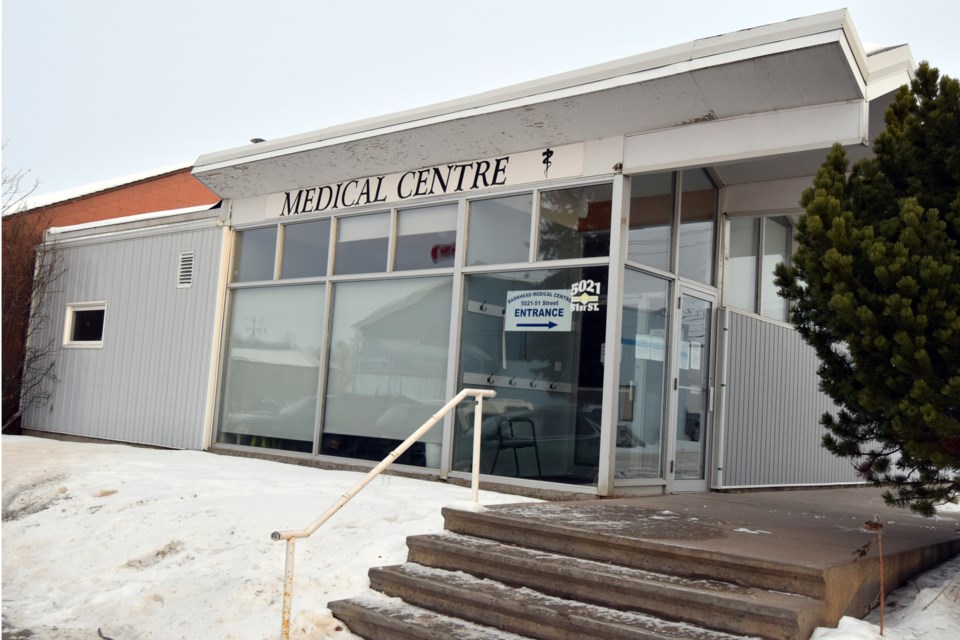WESTLOCK – Rural doctors are now exempt from a provincial policy that would have removed their ability to receive pay for the work they do in hospitals.
Health Minister Tyler Shandro announced the changes April 24, along with an additional $81 million allocated for doctor recruitment and retention programs in rural and remote areas.
“Earlier this year, I announced changes to how we pay for overhead when physicians work in hospitals. Our intent was to ensure that physicians were paid for the cost of running their offices when they work in them, not in hospitals where taxpayers already pay for the overhead costs.
“Now, I’ve heard from my colleagues, from rural physicians as well as from rural leaders across the province that this policy forces physicians and hospitals to make choices which reduce access,” said Shandro
The initial change, doctors said, would have forced physicians to reduce their in-hospital practice.
On April 20, the Rural Sustainability Initiative group, made up of doctors across the province, including Westlock-based physician Dr. Vicci Fourie, released a letter claiming that 47 per cent of the 300 rural doctors they surveyed across 44 different communities would be forced to decrease hospital services by July.
“Basically, this is a grassroots physician group that have huge concerns about where this is leading. (The government is) using statisticians to make healthcare decisions, they’re not using physicians who are the experts in the area,” said Fourie via Zoom at the time.
He added it would have amounted to a “fundamental change” in how rural medicine is practiced. Most doctors split their work between clinics and hospitals (including emergency room and obstetric care); for some, it’s the reason they choose a rural practice over urban.
Fourie is a physician at the Associate Medical Clinic and a general practitioner surgeon doing obstetric and long-term care; he says “rural is not a profession, it’s a lifestyle.”
He explained that the proposal which would have removed remuneration for in-hospital work would have made rural practice as it is now “impossible.”
At the time, Fourie wrote in the group’s letter that “rural MLAs have been strangely silent on this issue and seem forced to tow the party line.”
Two days prior to the provincial announcement, Athabasca-Barrhead-Westlock MLA Glenn van Dijken said “I’m not going to be an MLA that negotiates in public,” but that the numerous concerns he heard from doctors in his constituency were brought forward to Shandro.
“My goal as an MLA is to listen to the consequences being felt by rural physician practices and bring those responses back to the ministry to fully inform the decisions going forward.
“I do not believe the discussions to be over,” said van Dijken at the time.
On-call rates for rural doctors with additional training were also increased to a $20-$23 per hour range.
For now, Shandro said, the same model for urban doctors is on hold, pending a review by Alberta Health Services.
Retention
The government intends to spend an additional $81 million on programs to recruit and retain physicians in rural communities.
The money would go toward lifting the cap on Rural Remote Northern Program (RRNP) variable fee premiums.
Across the RRNP-eligible areas, doctors receive a premium per insured service they provide. That premium ranges from five to 36 per cent, depending on where a doctor practices, to a maximum of $60,000 total. That cap has now been lifted.
“This change means that effective immediately, Alberta will have the best incentive program for physicians in the country. Funding for this program will now be in excess of $57 million,” said Shandro.
In the Town and Country This Week area, Athabasca doctors receive 12.21 per cent, 6.46 per cent in Barrhead and 5.54 per cent in Westlock.
But for some communities outside of this area, the announcement that day left physicians relatively confused. The updated RRNP list excluded about 140 rural places from the program. Rocky Mountain Outlook reported that the flat fee portion of the program had been eliminated, which Shandro did not specify in the press conference.
This left the communities that did not score enough "isolation points" to qualify for the variable fee rate – but did previously receive a flat rate – off the compensation list.
On Sunday, Alberta Health responded via Twitter that the wrong list had been made public, and doctors in those 140 communities were still eligible for the flat fee.
The province’s recruitment and retention plan also includes funding for 20 students to attend medical school.
But Fourie identified a different aspect of the rural recruitment gap in rural Alberta, not just the lack of funding for these types of programs.
“We’re fortunate in Westlock because in the past, the doctors used to be involved with active recruitment. Unfortunately, now it is Alberta Health Services' role to do that. We feel that we ought to recruit people with the same interests, with the same standard of care and that will fit in well with the community.
“Since Alberta Health Services have been doing recruitment, it’s really, really hard to get doctors. There were a lot of doctors that signed on to come to rural towns in northern Alberta and a lot of them cancelled because of government changes and what they were hearing,” said Fourie.
So not only did the framework as it was originally proposed influence doctors to no longer accept rural positions, but the way in which recruitment is done under AHS might be a factor to why there is great disparity between communities when it comes to physicians.
The province has engaged in a review of rural health care, employing University of Alberta's chair of the department of family medicine Dr. Lee Green. The review also includes the possibility of a salaried model for all physicians.
Andreea Resmerita, TownandCountryToday.com
Follow me on Twitter @andreea_res
COVID-19 UPDATE: Follow our COVID-19 special section for the latest local and national news on the coronavirus pandemic, as well as resources, FAQs and more.



